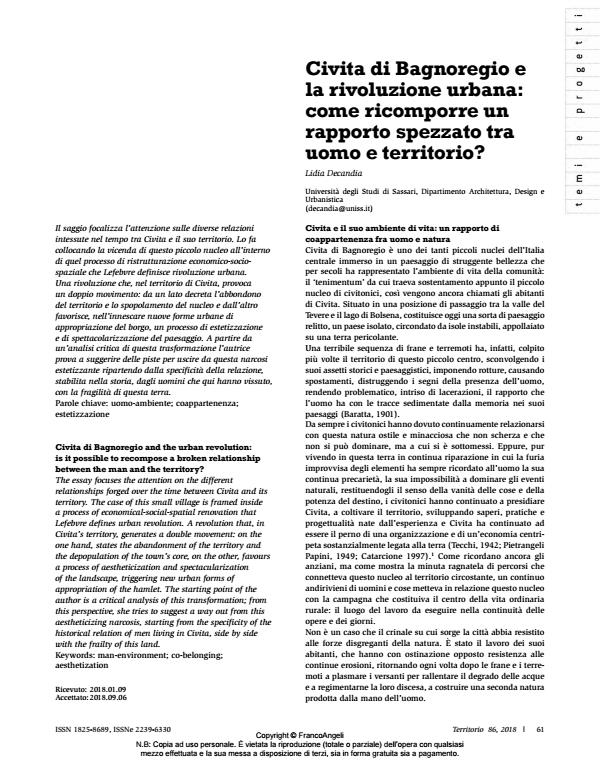Civita di Bagnoregio and the urban revolution: is it possible to recompose a broken relationship between the man and the territory?
Journal title TERRITORIO
Author/s Lidia Decandia
Publishing Year 2019 Issue 2018/86
Language Italian Pages 6 P. 61-66 File size 249 KB
DOI 10.3280/TR2018-086008
DOI is like a bar code for intellectual property: to have more infomation
click here
Below, you can see the article first page
If you want to buy this article in PDF format, you can do it, following the instructions to buy download credits

FrancoAngeli is member of Publishers International Linking Association, Inc (PILA), a not-for-profit association which run the CrossRef service enabling links to and from online scholarly content.
The essay focuses the attention on the different relationships forged over the time between Civita and its territory. The case of this small village is framed inside a process of economical-social-spatial renovation that Lefebvre defines urban revolution. A revolution that, in Civita’s territory, generates a double movement: on the one hand, states the abandonment of the territory and the depopulation of the town’s core, on the other, favours a process of aestheticization and spectacularization of the landscape, triggering new urban forms of appropriation of the hamlet. The starting point of the author is a critical analysis of this transformation; from this perspective, she tries to suggest a way out from this aestheticizing narcosis, starting from the specificity of the historical relation of men living in Civita, side by side with the frailty of this land.
Keywords: Man-environment; co-belonging; aesthetization
Lidia Decandia, Civita di Bagnoregio e la rivoluzione urbana: come ricomporre un rapporto spezzato tra uomo e territorio? in "TERRITORIO" 86/2018, pp 61-66, DOI: 10.3280/TR2018-086008